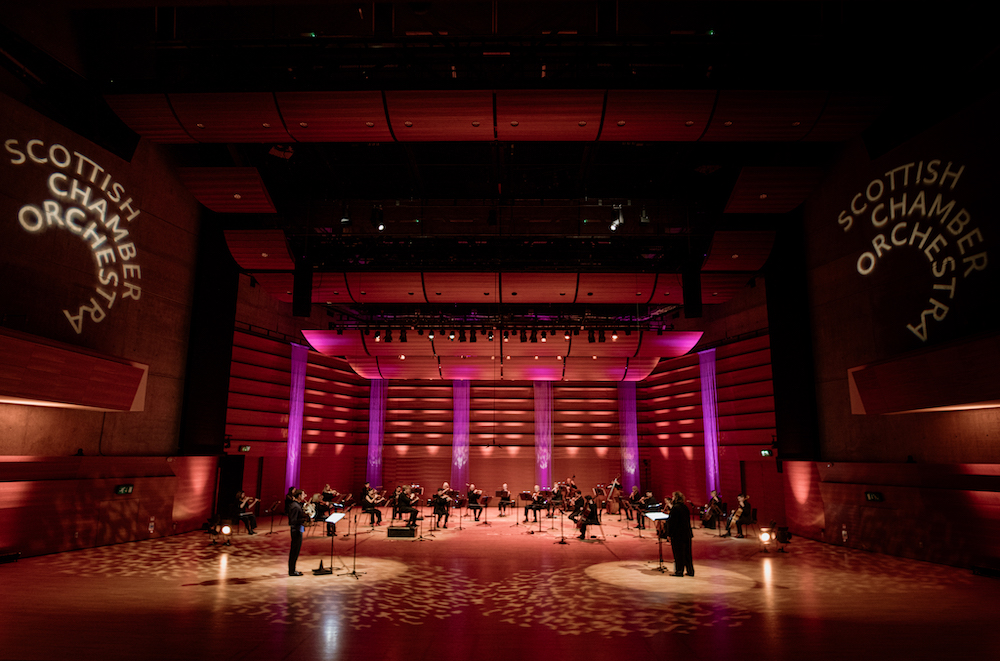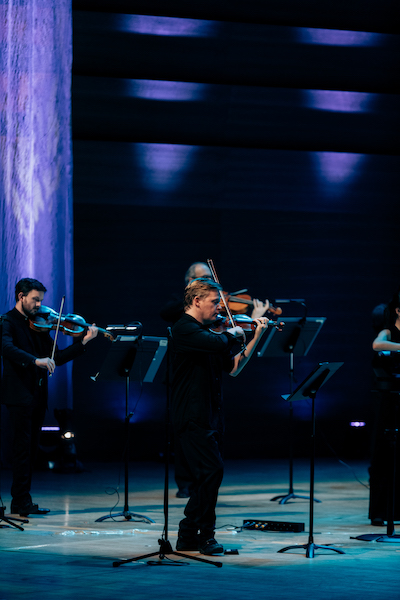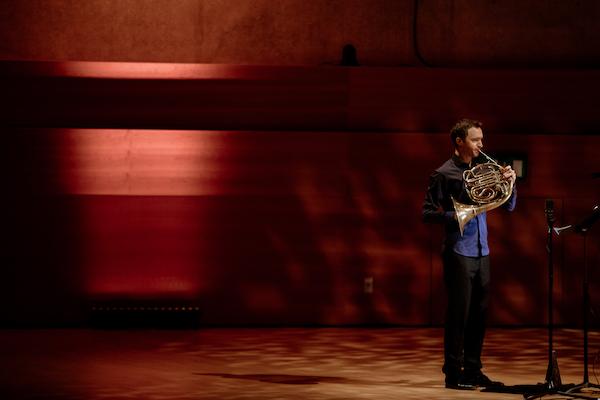After a brief interlude of concerts with a live audience, we are back to streamed events from empty halls (though many venues in London will be opening up again from next Thursday, concerts in Scotland have never opened up to the public). Some ensembles have opted to sell tickets, others – including the Scottish Chamber Orchestra – to broadcast the music free but solicit donations. The economics of both models seem fraught with problems but at the same time the show must go on.
It’s also noticeable that the production values of broadcasts like last night’s are becoming impressive. Multiple cameras, well edited, straightforward but warm presentation by cellist Su-a Lee and a pretty impressive sound considering it was on YouTube (I had the HD settings on) made for an enjoyable experience, and the programme was wisely kept to under an hour. There was a brief conversation between the principals between the two pieces, but this was unforced, fluent, and genuinely insightful, without the badgering of a presenter. I have been listening to Anna Clyne’s music quite a lot recently as the recently released album Mythologies is an excellent survey of her orchestral music, and its embrace of both filmic pizzazz and contemporary edge. Within Her Arms is apparently Clyne’s most performed piece, although not one I’ve heard before, and from what I can tell (and slightly surprisingly) not yet commercially recorded. Written for Esa-Pekka Salonen and the LA Phil, it commemorates Clyne’s mother, who died suddenly in 2008.
I have been listening to Anna Clyne’s music quite a lot recently as the recently released album Mythologies is an excellent survey of her orchestral music, and its embrace of both filmic pizzazz and contemporary edge. Within Her Arms is apparently Clyne’s most performed piece, although not one I’ve heard before, and from what I can tell (and slightly surprisingly) not yet commercially recorded. Written for Esa-Pekka Salonen and the LA Phil, it commemorates Clyne’s mother, who died suddenly in 2008.
It is a 14-minute elegy for 15 strings, using small melodic fragments often in canon, movingly expressing Clyne’s grief. Occasionally a more extended melody emerges, but it is mostly a study in texture. There are hints of Tippett in the close string counterpoint, the ghost of Scottish folksong in the modality and echoes of Arvo Pärt in the music’s single-minded pursuit of an idea.
 The charismatic Finn Pekka Kuusisto (pictured left) directed from the violin, doing most of his work with his eyes, sometimes pulsing with his violin and at the very end conducting with his bow in graceful wave. The players, spaced, facing each other in ranks, captured the lamenting flavour of the music with its low centre of gravity, and soared in the impassioned, intricate climax.
The charismatic Finn Pekka Kuusisto (pictured left) directed from the violin, doing most of his work with his eyes, sometimes pulsing with his violin and at the very end conducting with his bow in graceful wave. The players, spaced, facing each other in ranks, captured the lamenting flavour of the music with its low centre of gravity, and soared in the impassioned, intricate climax.
If the Clyne has quickly established a reputation in the decade since its composition, the other piece has been acknowledged as a stone-cold classic for over half a century. Britten’s Serenade brought together Kuusisto, who has worked with SCO for almost 20 years, their former principal horn Alec Frank-Gemmill and the brilliant tenor Allan Clayton.
Frank-Gemmill started the prologue in the dark, a spotlight gradually emerging. He and Clayton were facing the string players, augmented in number, and although everyone was spaced this arrangement allowed for good communication, probably better than would have been possible in a standard concert hall with everyone facing in the same direction.
 Allan Clayton (pictured above by Sim Canetty-Clarke) cut a slightly dishevelled, somewhat Grimesian figure, extravagantly bearded but sounding divine. He characterised the music with his usual incisive, mercurial manner, one moment a twinkle in his eye, the next a demonic glare. The interaction with Frank-Gemmill was gripping: “Blow, bugle, blow” was issued as an instruction that just had to be obeyed. The “Elegy” became an operatic recitative, Clayton unleashing the full power of his voice, but it is essentially an essay for the horn, Frank-Gemmill finding warmth in the low register and wonderfully metallic glissandos at the very end.
Allan Clayton (pictured above by Sim Canetty-Clarke) cut a slightly dishevelled, somewhat Grimesian figure, extravagantly bearded but sounding divine. He characterised the music with his usual incisive, mercurial manner, one moment a twinkle in his eye, the next a demonic glare. The interaction with Frank-Gemmill was gripping: “Blow, bugle, blow” was issued as an instruction that just had to be obeyed. The “Elegy” became an operatic recitative, Clayton unleashing the full power of his voice, but it is essentially an essay for the horn, Frank-Gemmill finding warmth in the low register and wonderfully metallic glissandos at the very end.
The effortless invention of each movement, their succinctness and economy of means, make for joyful music-making even when the subject matter is dark. But Kuusisto is a boyish, mischievous presence, always finding new things in the string writing. There were certainly moments – like the extrovert “Hymn” and the “Epilogue” – where I really missed being in the room, the sound on speakers simply unable to capture the thrill of feeling the horn notes vibrating in the same air. But as the final notes faded into the distance I was just glad of the opportunity to see and hear fine musicians playing such extraordinary music.














Add comment